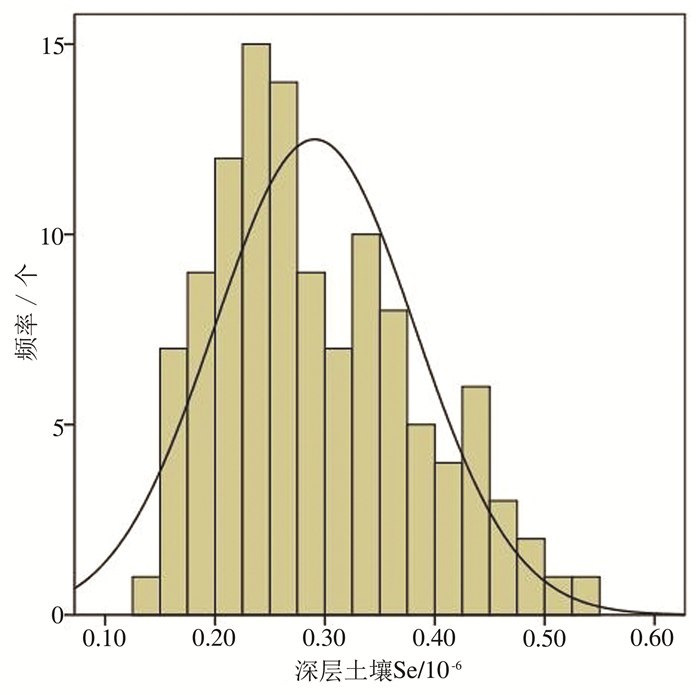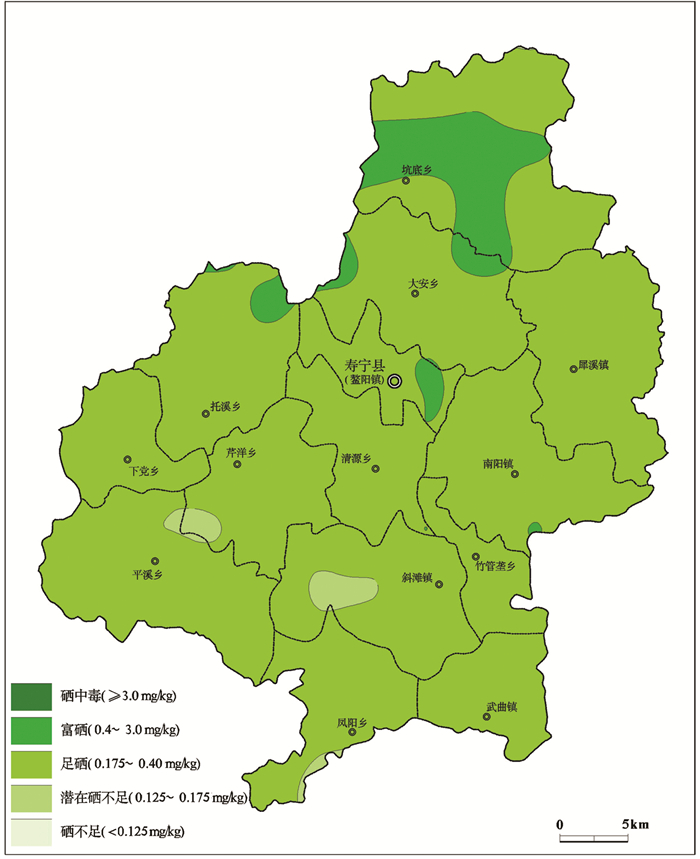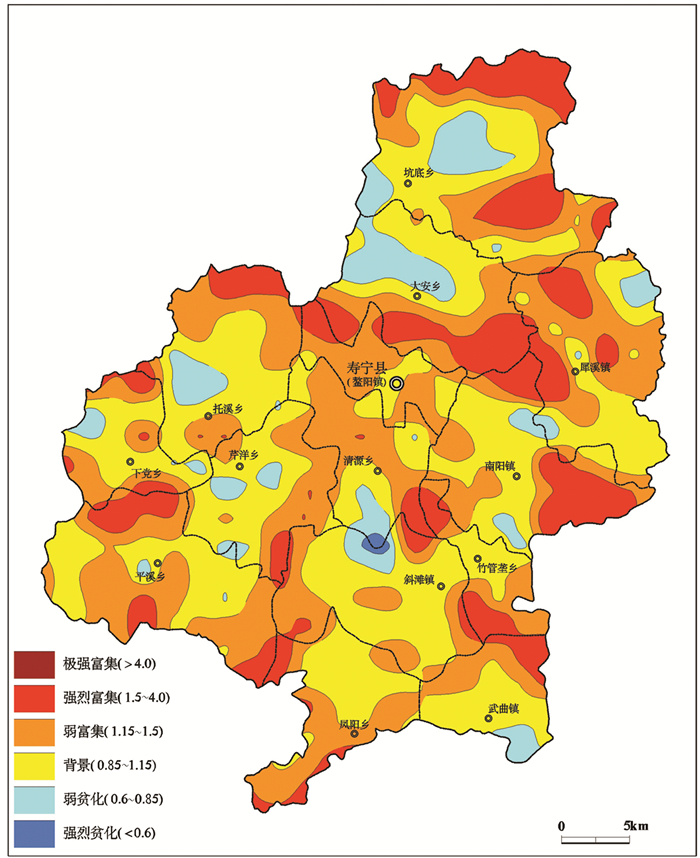The distribution of soil selenium in Shouning County of Fujian Province and its influencing factors
-
摘要:
通过福建省寿宁县多目标区域地球化学调查,查明了土壤硒分布和富集特征,研究了土壤硒与pH值及其他元素的相关关系。结果表明,表层土壤硒含量为0.13~0.92 mg/kg,平均值为0.35 mg/kg,深层土壤硒含量为0.14~0.54mg/kg,平均值为0.29 mg/kg,燕山晚期正常花岗岩(ξγK1)发育的土壤中硒含量最高,平均值为0.39mg/kg,其次为南园组四段(J3n4)和小溪组上段(K1x2)发育的土壤,不同土壤类型硒平均含量呈现出黄壤>红壤>水稻土的特点。表层土壤总体上属于富硒、足硒土壤,富硒土壤面积为405.04 km2,占28.24%,表层土壤硒含量相对于深层土壤表现出明显的富集特征,强烈富集区域与富硒土壤区域基本吻合,具有开发富硒农产品的潜力。相关分析表明,土壤硒含量与TOC、Al2O3、TFe2O3、Mn等呈显著正相关,与pH呈显著负相关,说明土壤理化性质、铁锰氧化物等对硒的表生地球化学行为有重要影响。
Abstract:Based on multi-purpose regional geochemical survey in Shouning County of Fujian Province, the authors found the characteristics of selenium distribution and enrichment and the correlation between selenium and pH as well as other elements. The results show that the selenium content in surface soil is from 0.13 mg/kg to 0.92 mg/kg, with the average value of 0.35 mg/kg. The total selenium content in deep soil is from 0.14 mg/kg to 0.54 mg/kg, with the average value of 0.29 mg/kg. The selenium content in the soil developed in late Yanshanian normal granite is the highest, with an average value of 0.39 mg/kg, followed by the soil developed in 4th member of the Nanyuan Formation and the upper part of the Xiaoxi Formation. The selenium content of different soil types shows that the content of yellow soil is higher than that of red soil, and that of red soil is higher than that of paddy soil. The surface soil generally belongs to selenium-rich and selenium-sufficient soil, the area of selenium-rich soil contains 405.04km2, accounting for 28.24%. The selenium content in the surface soil demonstrates an apparent feature of enrichment relative to the content in the deep soil, with the strong enrichment area basically consistent with the area of selenium-rich soil with the potential of developing selenium-rich agricultural products. The correlation analysis indicates that the selenium content in soil has a significant positive correlation with organic carbon, aluminum oxide, total iron oxide and manganese, and has a negative correlation significantly with pH, indicating that soil physical and chemical properties, iron and manganese oxides in the soil play important roles in the geochemical behaviors of selenium.
-

-
表 1 样品分析方法及检出限
Table 1. Analytical methods and detection limits of the samples
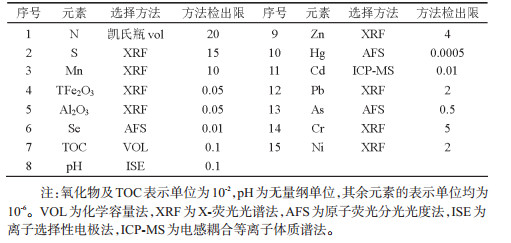
表 2 寿宁县表层土壤和深层土壤硒元素(mg/kg)地球化学参数
Table 2. Geochemical parameter of selenium(mg/kg) in surface soil and deep soil, Shouning

表 3 不同地质背景下表层土壤硒含量(mg/kg)特征
Table 3. Selenium content (mg/kg) in different geological backgrounds

表 4 不同土壤类型中表层土壤硒含量(mg/kg)特征
Table 4. Selenium content (mg/kg) in different types of soils
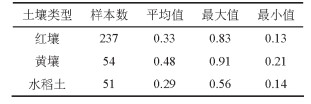
表 5 表层土壤和深层土壤硒丰缺划分结果
Table 5. Abundance and deficiency of selenium in surface soil and deep soil

表 6 土壤硒表层生富集系数分类及富集面积
Table 6. Classification of supergene concentration coefficients of soil selenium and area of each grade
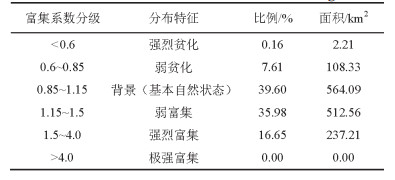
表 7 寿宁县表层土壤中全硒含量与其他元素含量的相关性
Table 7. Correlation coefficients between selenium and other indicators in the surface soils of Shouning

-
AnYonghui, Li Xufeng, He Jin, JiaXiaofeng, Li Liang. 2010. Distribution characteristics of Kaschin-Beck disease in relation to geological environment of Zoige County[J]. Geology in China, 37(3):587-593(in Chinese with English abstract). http://en.cnki.com.cn/Article_en/CJFDTotal-DIZI201003008.htm
Daniel L M. 2008. Distribution, mineralogy and geochemistry of selenium in felsic volcanic-hosted massive sulfide deposits of the Finlayson Lake District, Yukon Territory, Canada[C]. Society of Economic Geologists, Inc, 103(1): 61-68.
Fiona M Fordyce.2013. Selenium Deficiency and Toxicity in the Environment[M].Berlin:Springer.
Gunnar G N. 1971. Influence of pH and texture of the soil on Ⅰ plant uptake of added selenium[J]. Journal of Agricultural and Food Chemistry, 19(6):1165-1167. doi: 10.1021/jf60178a030
Guo Li, Yang Zhongfang, Ruan Qihe, Hu Shengying, Zhou Yanan, FengHui. 2012.Content and distribution of Selenium in Soil of Beijing Plain[J]. Geoscience, 26(5):859-864(in Chinese with English abstract). http://www.wanfangdata.com.cn/details/detail.do?_type=perio&id=xddz201205003
Hou Shaofan. 2000. Change trend and factors of residential selenium nutrition status in low selenium belt in China[J].Geographical Research, 19(2):134-140(in Chinese with English abstract). http://www.wanfangdata.com.cn/details/detail.do?_type=perio&id=dlyj200002004
Hu Yanhua, Wang Jiaen, CaiZihua, Song Mingyi, Kang Zhanjun, Yan Tiezeng.2010. Content, dstribution and influencing factors of selenium in soil of Jiashan area, northern Zhejiang Province[J]. Geological science and technology information, 29(6):84-88(in Chinese with English abstract). http://www.sciencedirect.com/science/article/pii/S0098847209002135
Huang Qi, Cheng Hangxin, Chen Chuxin, Wang Haibo, Guo Li, Zhao Dongdong, Wang Pan. 2013. The investigation and evaluation of selenium-rich soil in Fangshan district of Beijing city[J]. Geophysical and Geochemical Exploration, 37(5):889-894(in Chinese with English abstract). http://www.wanfangdata.com.cn/details/detail.do?_type=perio&id=wtyht201305025
Liao Qilin, Hua Ming, FengJinshun, Jin Yang, Wu Xinmin, Yan Zhaoyang, Zhu Bowan. 2007. Natural Se-rich tea in local Se-rich soils in southern Jiangsu[J]. Geology in China, 34(2):347-353(in Chinese with English abstract). http://www.wanfangdata.com.cn/details/detail.do?_type=perio&id=zgdizhi200702018
Liao Qilin, Jin Yang, Wu Xinmin, BiKuisen, Fan Difu, Hua Ming. 2005. Artificial environmental concentration coefficients of elements in soils in the Nanjing area[J]. Geology in China, 32(1):141-147(in Chinese with English abstract). http://www.wanfangdata.com.cn/details/detail.do?_type=perio&id=zgdizhi200501019
Li Jie, Yang Zhiqiang, Liu Zhigang, ZhengGuodong, Wang Yinghui, Chen Biao. 2012. Distribution of selenium in soils of Nanning City and its influencing factors[J]. Acta Pedologica Sinica, 49(5):1012-1020(in Chinese with English abstract). http://www.wanfangdata.com.cn/details/detail.do?_type=perio&id=trxb201205020
Liu Zheng.1996. Trace Element in Chinese Soil[M]. Nanjing:Jiangsu Science and Technology Press (in Chinese).
Rayman M P. 2000. The importance of selenium to human health[J]. The Lancet, 356(9225):233-241. doi: 10.1016/S0140-6736(00)02490-9
Song Mingyi, Cai Zihua, Huang Chunlei, Hu Yanhua, Wang Jiaen. 2011.The characteristics and genetic analysis of selenium-rich soil in Hangjiahu plain of northern Zhejiang[J]. Guangdong Trace Elements Science, 18(8):20-26(in Chinese with English abstract). http://www.wanfangdata.com.cn/details/detail.do?_type=perio&id=gdwlyskx201108005
Sun Zhao, Hou Qingye, Yang Zhongfang, Yang Xiaoyan, Huang Yong, Chen Enke. 2010. Factors controlling the transport and transformation of selenium in typical soil environments:A case study of the Chengdu economic zone in Sichuan Province[J]. Geology in China, 37(6):1760-1768(in Chinese with English abstract). http://en.cnki.com.cn/Article_en/CJFDTOTAL-DIZI201006024.htm
Tao Chunjun, Jia Shijun, Liang Hongxia, Xing Runhua, Chen Yongning, Chen Furong. 2014. Research on availability and development of selenium-rich soil in Qingxi area, Anhui Province[J]. Resources Survey and Environment, 35(1):67-72(in Chinese with English abstract). http://www.sciencedirect.com/science/article/pii/S0008622314005302
Tan Jianan. 1996. Environmental Life Elements and keshan disease[M]. Beijing:China Medical Science Press(in Chinese).
Tan Jianan. 1989. The Atlas of Endemic Diseases and Their Environments in the People's Republic of China[M]. Beijing:Science Press (in Chinese).
Wang Shiji, Wu Xiaoyong, Liu Junbao. 2004. Characteristics of elemental selenium in soils and evaluation of eco-environmental effects in northern Zhejiang[J]. Geology in China, 31(S1):118-125(in Chinese with English abstract). http://www.wanfangdata.com.cn/details/detail.do?_type=perio&id=zgdizhi2004z1019
Wang Yanliang, Hou Wei, HouZhanqing, XiongShaoli. 2010. The relationship between the kaschin-beck disease and the geological environment in Jilin Province[J]. Geology in China, 37(3):577-581(in Chinese with English abstract). http://en.cnki.com.cn/Article_en/CJFDTOTAL-DIZI201003006.htm
Wei Ran, Hou Qingye, Yang Zhongfang, Yin Guosheng, Zhong Cundi, Deng Guohui, Ma Yilin. 2012. Its transformation and enrichment in root soil of Poyang lake basin, Jiangxi Pprovince[J]. Geophysical and Geochemical Exploration, 35(1):109-113(in Chinese with English abstract). http://en.cnki.com.cn/Article_en/CJFDTOTAL-WTYH201201023.htm
Wen Bangyong, ZhangTaoliang, LiXizhou, XieZhendong. 2014. A feasibility study of selenium-rich soil development in Longnan County of Jiangxi Province[J]. Geology in China, 41(1):256-263(in Chinese with English abstract). http://www.wanfangdata.com.cn/details/detail.do?_type=perio&id=zgdizhi201401021
Yang Zhiqiang, Li Jie, Zheng Guodong, Chen Biao, Zhong Xiaoyu. 2014. Geochemical characteristics of selenium-rich soil in Beibu Gulf coastal economic zone of Guangxi[J]. Geophysical and Geochemical Exploration, 38(6):1260-1269(in Chinese with English abstract). http://www.wanfangdata.com.cn/details/detail.do?_type=perio&id=wtyht201406030
Yang Zhongfang, Yu Tao, HouQingye, Yang Yi, Fu Yangrong, Zhao Xianglei. 2012. Geochemical characteristics of soil selenium in farmland of Hainan Island[J]. Geoscience, 26(5):837-849(in Chinese with English abstract). http://www.wanfangdata.com.cn/details/detail.do?_type=perio&id=xddz201205001
Zhang Haibo, LuoYongming, Wu Longhua, Zhang Ganlin, Zhao Qiguo, Huang Minghong. 2005. Hong Kong soil researches Ⅱ. Distribution and content of selenium in soils[J]. Acta Pedologica Sinica, 42(3): 404-410 (in Chinese with English abstract).
http://en.cnki.com.cn/Article_en/CJFDTOTAL-TRXB200503008.htm Zhu Jianming, Liang Xiaobing, Ling Hongwen, Wang Mingshi, Wang Fushun, Liu Shirong. 2003. Advances in studying occurrence modes of selenium in environment[J]. Bulletin of Mineralogy, Petrology and Geochemistry, 22(1):75-81(in Chinese with English abstract). http://www.wanfangdata.com.cn/details/detail.do?_type=perio&id=kwysdqhxtb200301015
Zhu Y G, Pilon-Smits E A H, Zhao J, Williams P N, Meharg A A.2009. Selenium in higher plants:Understanding mechanisms for biofortification and phytoremediation[J]. Trends in Plant Science, 14(8):436-442. doi: 10.1016/j.tplants.2009.06.006
安永会, 李旭峰, 何锦, 贾小丰, 李亮. 2010.若尔盖县大骨节病分布特征及其与地质环境的关系[J].中国地质, 37(3):587-593. doi: 10.3969/j.issn.1000-3657.2010.03.007 http://geochina.cgs.gov.cn/geochina/ch/reader/view_abstract.aspx?flag=1&file_no=20100306&journal_id=geochina
郭莉, 杨忠芳, 阮起和, 胡省英, 周亚男, 冯辉. 2012.北京市平原区土壤中硒的含量和分布[J].现代地质, 41(1):859-864. http://d.old.wanfangdata.com.cn/Periodical/xddz201205003
侯少范. 2000.中国低硒带人群硒营养状态的变化趋势与成因分析[J].地理研究, 19(2):134-140. doi: 10.3321/j.issn:1000-0585.2000.02.004
胡艳华, 王加恩, 蔡子华, 宋明义, 康占军, 颜铁增. 2010.浙北嘉善地区土壤硒的含量、分布及其影响因素初探[J].地质科技情报, 29(6):84-88. doi: 10.3969/j.issn.1000-7849.2010.06.014
黄淇, 成杭新, 陈出新, 王海波, 郭莉, 赵冬冬, 王攀. 2013.北京市房山区富硒土壤调查与评价[J].物探与化探, 37(5):889-894. http://d.old.wanfangdata.com.cn/Periodical/wtyht201305025
廖启林, 华明, 冯金顺, 金洋, 吴新民, 颜朝阳, 朱伯万. 2007.苏南局部富硒土壤及其天然富硒茶叶初步研究[J].中国地质, 34(2):347-353. doi: 10.3969/j.issn.1000-3657.2007.02.018 http://geochina.cgs.gov.cn/geochina/ch/reader/view_abstract.aspx?flag=1&file_no=20070218&journal_id=geochina
廖启林, 金洋, 吴新民, 毕葵森, 范迪富, 华明. 2005.南京地区土壤元素的人为活动环境富集系数研究[J].中国地质, 32(1):141-147. doi: 10.3969/j.issn.1000-3657.2005.01.019
李杰, 杨志强, 刘枝刚, 郑国东, 王英辉, 陈彪. 2012.南宁市土壤硒分布特征及其影响因素探讨[J].土壤学报, 41(5):1012-1020. http://d.old.wanfangdata.com.cn/Periodical/trxb201205020
刘铮. 1996.中国土壤微量元素[M].南京:江苏科学技术出版社.
宋明义, 蔡子华, 黄春雷, 胡艳华, 王加恩. 2011.杭嘉湖平原区富硒土壤特征与成因分析[J].广东微量元素科学, 18(8):20-26. doi: 10.3969/j.issn.1006-446X.2011.08.005
孙朝, 侯青叶, 杨忠芳, 杨晓燕, 黄勇, 陈恩科. 2010.典型土壤环境中硒的迁移转化影响因素研究——以四川省成都经济区为例[J].中国地质, 37(6):1760-1768. doi: 10.3969/j.issn.1000-3657.2010.06.023 http://geochina.cgs.gov.cn/geochina/ch/reader/view_abstract.aspx?flag=1&file_no=20100623&journal_id=geochina
陶春军, 贾十军, 梁红霞, 邢润华, 陈永宁, 陈富荣. 2014.安徽琴溪地区土壤硒元素有效性及开发研究[J].资源调查与环境, 35(1):67-72. doi: 10.3969/j.issn.1671-4814.2014.01.009
谭见安. 1996.环境生命元素与克山病[M].北京:中国医药科技出版社.
谭见安. 1990.中华人民共和国地方病与环境图集[M].北京:科学出版社.
王世纪, 吴小勇, 刘军保. 2004.浙北地区土壤硒元素特征及其生态环境效应评价[J].中国地质, 31(增刊):118-125. http://www.cnki.com.cn/Article/CJFDTOTAL-DIZI2004S1020.htm
王延亮, 侯伟, 侯占清, 熊邵礼. 2010.略论吉林省大骨节病与地质环境的关系[J].中国地质, 37(3):577-581. doi: 10.3969/j.issn.1000-3657.2010.03.005 http://geochina.cgs.gov.cn/geochina/ch/reader/view_abstract.aspx?file_no=20100304&flag=1
魏然, 侯青叶, 杨忠芳, 尹国胜, 衷存堤, 邓国辉, 马逸麟. 2012.江西省鄱阳湖流域根系土硒形态分析及其迁移富集规律[J].物探与化探, 35(1):109-113. http://d.old.wanfangdata.com.cn/Periodical/wtyht201201022
文帮勇, 张涛亮, 李西周, 谢振东. 2014.江西龙南地区富硒土壤资源开发可行性研究[J].中国地质, 41(1):256-263. doi: 10.3969/j.issn.1000-3657.2014.01.021 http://geochina.cgs.gov.cn/geochina/ch/reader/view_abstract.aspx?file_no=20140121&flag=1
杨志强, 李杰, 郑国东, 陈彪, 钟晓宇. 2014.广西北部湾沿海经济区富硒土壤地球化学特征[J].物探与化探, 38(6):1260-1269. http://d.old.wanfangdata.com.cn/Periodical/wtyht201406030
杨忠芳, 余涛, 侯青叶, 杨奕, 傅杨荣, 赵相雷. 2012.海南岛农田土壤Se的地球化学特征[J].现代地质, 26(5):837-849. doi: 10.3969/j.issn.1000-8527.2012.05.001
章海波, 骆永明, 吴龙华, 张甘霖, 赵其国, 黄铭洪. 2005.香港土壤研究Ⅱ.土壤硒的含量、分布及其影响因素[J].土壤学报, 42(3):404-410. doi: 10.3321/j.issn:0564-3929.2005.03.009
朱建明, 梁小兵, 凌宏文, 王明仕, 汪福顺, 刘世荣. 2003.环境中硒存在形式的研究现状[J].矿物岩石地球化学通报, 22(1):75-81. doi: 10.3969/j.issn.1007-2802.2003.01.015
-



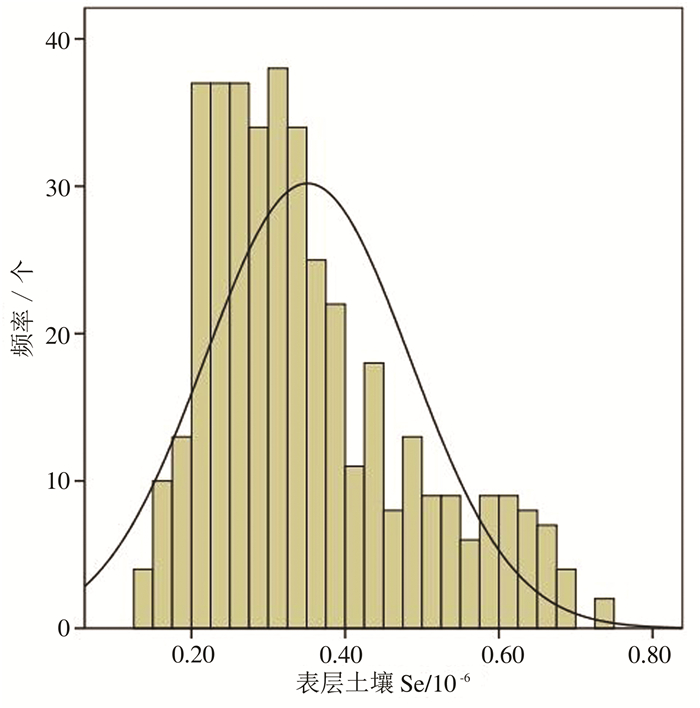
 下载:
下载:
